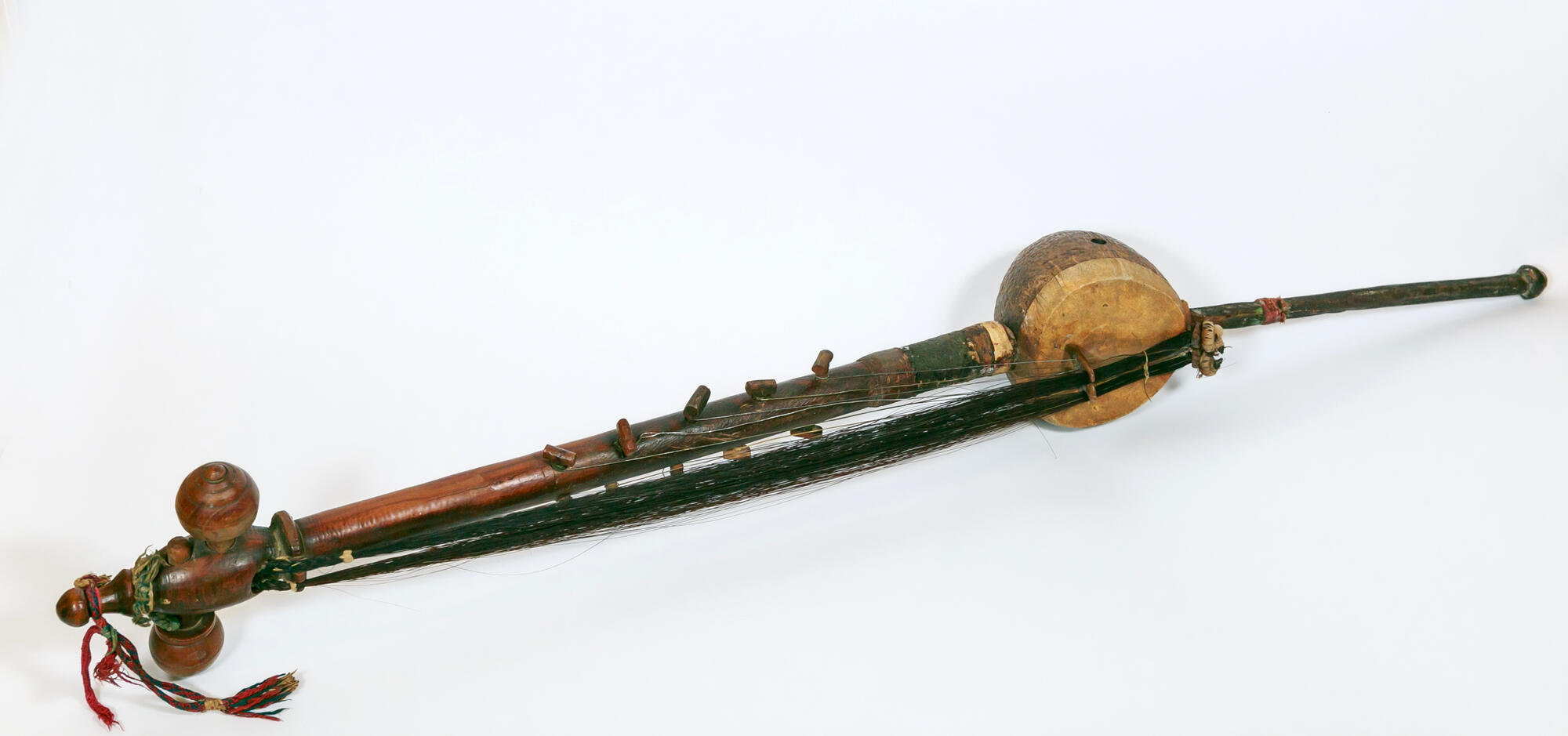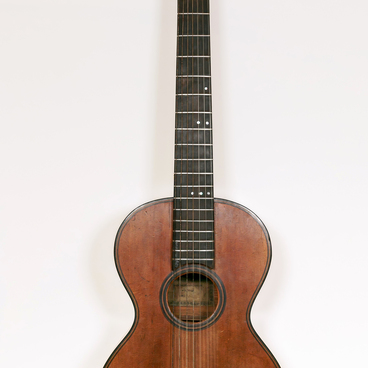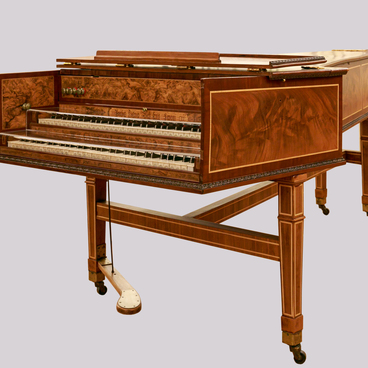The ghijak is a bowed string instrument that is used by many peoples in Central Asia, including Tajiks, Uzbeks, Turkmens, Karakalpaks, and Uyghurs. The ghijak is mentioned in manuscripts of the Timurid period written between the 14th and the 16th century. Book illustrations that were created between the 16th and the 18th century showed it as an instrument used by solo performers and ensembles.
The ghijak’s bowl-shaped body is usually carved out of wood, and in some cases made of a pumpkin or a coconut. The open front part of the body is covered with a leather membrane. It functions as the instrument’s deck. The round neck, which is wider at the top, is connected to the body by a metal spike that protrudes below. The instrument has a slightly muted squeaky sound.
The name of the instrument originates from the Turkmen word “gydjamak” which means “to squeak.” The instrument is played using a short bow with a free-hanging strand of horsehair. The tension of this strand is regulated with finger pressure. Unlike in the European tradition of bowed string instruments, the bow always remains in one plane while the instrument is rotated to play the appropriate string. The ghijak is held vertically, with its foot resting against a knee or the floor.
The instrument from the museum’s collection used to belong to August Eichhorn. The bandmaster of military orchestras assembled a collection of musical instruments in Tashkent in the 1870s and the 1880s.
The small bowl-shaped body of this old ghijak is made of a coconut covered with a lambskin membrane. It has two sound holes on each lateral side and three sound holes in the back. A pegbox is carved at the top of the neck and is equipped with two large colored pegs made of mulberry wood. The two main strings made of black horsehair strands are tied together with a cord at the top and wrapped around the pegs. At the bottom, they are attached to two metal hooks on the soundbox.
This ghijak is unique because it has five resonating copper wire strings on each side, in addition to the main strings. August Eichhorn himself wrote that this is a very rare and old instrument acquired from a Kyrgyz wanderer from the Tian Shan Mountains.
The ghijak’s bowl-shaped body is usually carved out of wood, and in some cases made of a pumpkin or a coconut. The open front part of the body is covered with a leather membrane. It functions as the instrument’s deck. The round neck, which is wider at the top, is connected to the body by a metal spike that protrudes below. The instrument has a slightly muted squeaky sound.
The name of the instrument originates from the Turkmen word “gydjamak” which means “to squeak.” The instrument is played using a short bow with a free-hanging strand of horsehair. The tension of this strand is regulated with finger pressure. Unlike in the European tradition of bowed string instruments, the bow always remains in one plane while the instrument is rotated to play the appropriate string. The ghijak is held vertically, with its foot resting against a knee or the floor.
The instrument from the museum’s collection used to belong to August Eichhorn. The bandmaster of military orchestras assembled a collection of musical instruments in Tashkent in the 1870s and the 1880s.
The small bowl-shaped body of this old ghijak is made of a coconut covered with a lambskin membrane. It has two sound holes on each lateral side and three sound holes in the back. A pegbox is carved at the top of the neck and is equipped with two large colored pegs made of mulberry wood. The two main strings made of black horsehair strands are tied together with a cord at the top and wrapped around the pegs. At the bottom, they are attached to two metal hooks on the soundbox.
This ghijak is unique because it has five resonating copper wire strings on each side, in addition to the main strings. August Eichhorn himself wrote that this is a very rare and old instrument acquired from a Kyrgyz wanderer from the Tian Shan Mountains.






